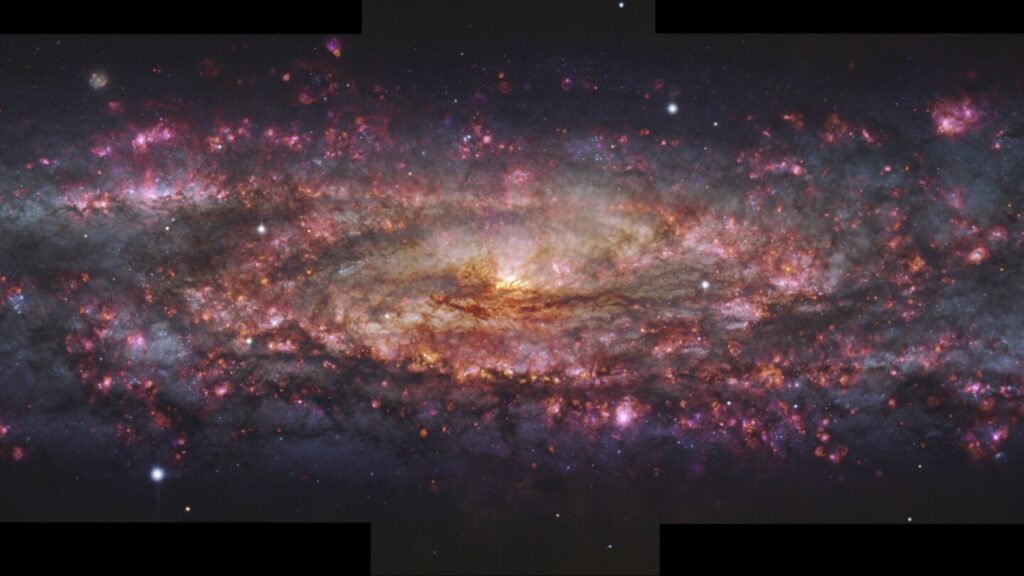
CAPE CANAVERAL, Fla. — In a remarkable astronomical achievement, scientists have unveiled a breathtaking image of the Sculptor galaxy, showcasing its vibrant colors and intricate details. Captured by the European Southern Observatory’s Very Large Telescope in Chile, this panoramic shot reveals the galaxy in thousands of colors, offering a star-packed map that is already proving invaluable to researchers.
Released on Wednesday, the image is the result of over 50 hours of observation, with more than 100 exposures meticulously stitched together. Spanning 65,000 light-years, it covers nearly the entire galaxy. To put this into perspective, a single light-year is equivalent to 5.8 trillion miles.
The Science Behind the Spectacle
The Sculptor galaxy, officially known as NGC 253, is classified as a starburst galaxy, characterized by its intense star-forming activity. Located 11 million light-years away in the Southern Hemisphere’s constellation Sculptor, it is visible with binoculars or small telescopes, making it a favorite among amateur astronomers.
Enrico Congiu, who led the research at the observatory, explained the significance of this galaxy’s location. “The Sculptor galaxy is in a sweet spot,” he stated. “It is close enough that we can resolve its internal structure and study its building blocks with incredible detail, but at the same time, big enough that we can still see it as a whole system.”
Unveiling the Galaxy’s Secrets
The multitude of colors captured in this image provides critical insights into the galaxy’s composition, age, and motion. Traditional photographs typically offer only a handful of colors, but this latest snapshot of Sculptor is a glowing montage of purples, pinks, and yellows.
“The more shades of color from stars, gas, and dust in a galaxy, the more clues to their age, composition, and motion,” scientists noted.
Among their findings, the team has identified 500 planetary nebulae, which are clouds of gas and dust from dying stars. These nebulae serve as cosmic mile markers, helping astronomers measure distances across the universe. Their groundbreaking research is set to be published in the journal Astronomy & Astrophysics.
Implications and Future Research
This new image of the Sculptor galaxy not only enriches our understanding of starburst galaxies but also opens new avenues for research. By analyzing the colors and structures within the galaxy, scientists can better understand the processes driving star formation and galaxy evolution.
The announcement comes at a time when astronomers are increasingly focused on understanding the life cycles of galaxies. The detailed observations of Sculptor could provide a template for studying other galaxies with similar characteristics.
Meanwhile, the European Southern Observatory continues to push the boundaries of what we can observe from Earth. As technology advances, the potential for even more detailed and expansive images of distant galaxies grows, promising to further illuminate the mysteries of the universe.
According to experts, the ability to capture such detailed images of distant galaxies marks a significant step forward in astronomical research, offering a glimpse into the vast and colorful tapestry of the cosmos.
The Associated Press Health and Science Department, supported by the Howard Hughes Medical Institute’s Science and Educational Media Group and the Robert Wood Johnson Foundation, is responsible for this content.






